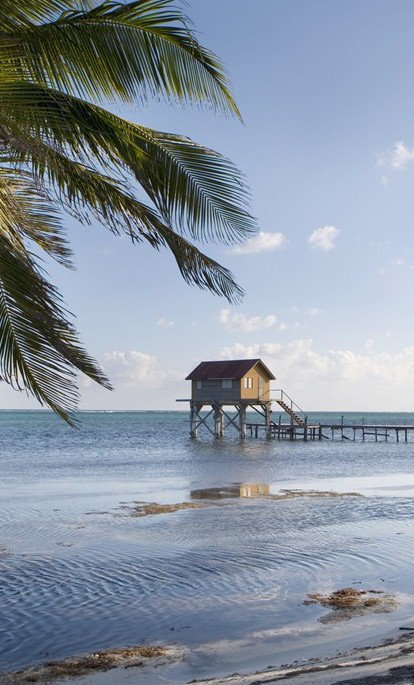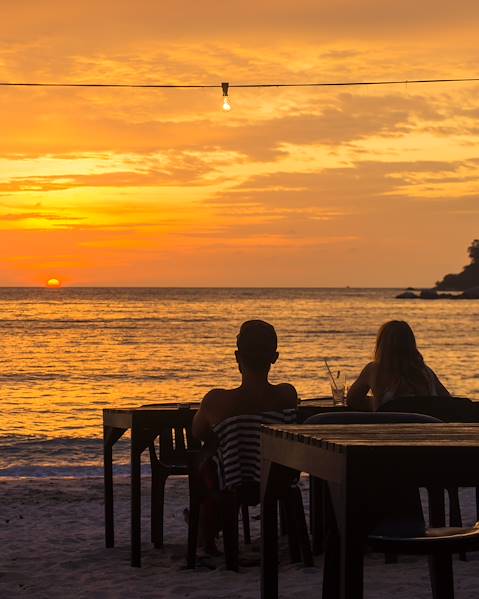Sandwiched between the Caribbean Sea and the jungles of Guatemala, Belize is a magical Central American nation, blessed with a spectacular barrier reef and some fascinating Mayan ruins. A long-time favourite with aquanauts and adventurers, Belize is garnering a reputation as one of the continent’s most exciting and attractive destinations. If you’re interested in experiencing the country’s rich flora and fauna up close, then here are some things to know before travelling to Belize…
Climate & Weather in Belize
Belize’s climate is subtropical, with a dry season from late February to May and a wet season between June and November (although August and September are also dry). The average temperature in Belize City is around 23°C in December and 29°C in July. Temperatures rarely drop below 16°C, even in winter, and humidity is high throughout the year. Coastal sea breezes do however provide some relief from the heat and humidity during the summer months. Trade winds also blow onshore most of the year, and from September to December northerly winds bring cooler, drier air. Hurricanes (tropical cyclones) are a threat from July through to November. January to April are considered the best months to visit Belize for warm, but not scorching temperatures, and less rainfall.
Currency in Belize
The official currency of Belize is the Belize dollar (BZ$), however US dollars are also accepted as currency. ATMs are available in larger towns and cities, but can sometimes be temperamental so carrying some cash is a good idea. Bringing an international card (with no transaction fee) is recommended for establishments which accept credit card payments. While locals don’t tend to tip, a gratuity of around 10% is welcomed and appreciated in taxis and restaurants. Haggling is uncommon in Belize and will usually be considered rude, except at street markets.
Food & Drink in Belize
Belizean food is a blend of Latin American and Caribbean flavours, featuring fresh, local ingredients and Creole influences. Seafood is the crown jewel of Belize’s cuisine, with fresh fish, lobster and shrimp widely available across the country. Rice and beans are served as an accompaniment to most main dishes, while tropical fruits (such as mangoes, papayas, pineapples, melons and bananas) are also a common staple. Some popular dishes include conch fritters, tacos, carnaches (fried tortilla served with refried beans, cabbage, carrots and cheese), ereba (bread made from grated cassava, often eaten with fish, plantains or gravy), ceviche (marinated fish or conch) and various meat stews.
In terms of drinks, beer is popular and Belikin is the most commonly found brand. Cashew-nut and berry wines are sold in some villages, and imported wine is available in some places, although it can be expensive. Rum, in both dark and clear varieties, is the most popular and inexpensive liquor. Given the quality and abundance of available fruits, fresh juices and smoothies are widely available, and another (more unusual) local drink is dried seaweed blended with evaporated and condensed milk, flavoured with cinnamon and nutmeg.
Transport in Belize
Travelling by bus is the easiest and most inexpensive way to get around Belize, with nearly all towns and villages connected via bus routes. Fast and comfortable express buses serve the main cities and towns, while for smaller villages you will have to rely on local services, with reduced running times. Taxis are another easy and safe way to get around cities, although be sure to use registered companies and avoid unlicensed street taxis. Licensed taxis in Belize can be identified by their green plates and operate out of special ranks in the centre of towns. They don’t have metres, so it’s a good idea to establish your fare in advance and within towns a fixed rate of BZ$8–10 (around £3-4) should apply. Renting a car is also a convenient way of exploring at your own leisure, while cycling can be a good way of navigating quieter towns, with an increasing number of bikes available to rent (especially in San Ignacio and Placencia). If you plan on visiting the Cayes, travelling by boat is the best option and a number of skiffs run daily between Belize City, Caye Caulker and Ambergris Caye.
Language in Belize
English is the official language of Belize, spoken by around 60% of the population. Spanish is the second most spoken language (spoken by over 50% of people) and most of the population also speaks a creole patois. Yucatec, Mopán, and Kekchí are spoken by the Maya in Belize.
Etiquette in Belize
Belizeans are friendly and welcoming to travellers; greet locals with a ‘good morning’ before asking for directions, or when entering a store or museum, to set a positive tone. The country on the whole is quite conservative, so be sure to dress respectfully (especially when visiting churches), although local dress is usually fairly casual. Don't take pictures inside churches or of indigenous people without first asking their permission (offering them a small sum as thanks is customary). The concept of being ‘on time’ is less adhered to in Belize and it’s customary for people to be around half an hour late to appointments.
Health & Safety in Belize
While Belize is generally considered safe for travellers, there are incidents of both petty and violent crime, so precautions should be taken while visiting. Avoid isolated areas and dark alleys, especially at night and in the cities, to avoid muggings. Due to high levels of crime, travellers are advised to exercise caution if travelling close to the south side of Belize City (Haulover Creek). Take precautions to protect yourself and your possessions, don’t leave belongings unattended, watch out for pick pockets in public areas and be sure to have travel insurance for your valuables. Do not hitchhike or accept lifts from strangers and if you need to get somewhere at night, take a licensed taxi rather than public transport. Be aware that wearing expensive jewellery could attract unwanted attention and avoid using your mobile phone in the street. Always keep your passport, air ticket and other valuable items in a safe place. If possible, travel in groups and use a qualified guide for trips off-the-beaten track. Immediately report all incidents of crime to the police by calling 911.
Take particular care when travelling near the border between Belize and Guatemala border because of the ongoing dispute between the two countries and only use officially recognised border crossings. Given the high number of adventure activities available in Belize, injuries can occur and it’s important to take adequate safety precautions if you plan to participate in any, including snorkelling and diving. Ensure weather conditions are suitable and only use registered and licensed operators.
Must-sees in Belize
- Belize Barrier Reef and the Great Blue Hole – Belize’s UNESCO World Heritage-listed barrier reef is a must-see for avid scuba divers, while the Great Blue Hole (a giant marine sinkhole off the coast) is one of its most intriguing features.
- Caye Caulker – one of Belize’s dinky islands off the coast, which represents the true meaning of an ‘island getaway’.
- Ambergris Caye – another castaway paradise off the coast, Ambergris is home to the second largest reef in the world.
- Lamanai Archaeological Reserve – located in the north of the country, Lamanai is a Mesoamerican archaeological site, which was once a major city of the Maya civilization.
- Adventure activities – catamaran trips, caving, snorkelling, diving, swimming and trekking are all on offer in Belize.
Things to Bring to Belize
It’s essential to bring sunscreen, a sunhat and sunglasses to avoid getting sunburnt. Insect repellent is also a good idea and its advisable to bring enough with you, as these products can be expensive to purchase once there. Good walking shoes are essential for exploring both inland and the coastal regions, while a rain jacket is useful in case of unpredictable weather. Ensure you have all necessary equipment for any activities you intend to participate in while there.

















